|
Score: 94/100 (9.4 out of 10)
The C.R. Patterson and Sons Company is a historical, biographical book that documents the remarkable, exceptional lives of the Patterson family—a Black family that founded one of America's first automobile companies in the late 19th and early 20th century. Just think about that for a second: a Black family in the 1800s founded a business in the slave-owning American south. That's astonishing and inspiring! This really is the perfect book to showcase on Black History Month. As touched on before, the C.R. Patterson and Sons Company was founded by Charles Richard Patterson in Greenfield, Ohio in 1865. It's so amazing to see the image on page 41 of Charles—a Black man—featured front and center on a business mural with his white employees. The author is quick to point out that Charles was not a slave. He was a free Black man living in the south. As fascinating as Charles is, his sons are equally interesting to read about. The one who captured our imagination the most was Frederick Douglass Patterson. Why? Because he was the first Black football player in Ohio State history. Think about that for a second: before Troy Smith, before C.J. Stroud, before Archie Griffith, before Eddie George, before Orlando Pace, before Ezekiel Elliott, there was Frederick Douglass Patterson. He apparently scored Ohio State's sixth ever touchdown and served as its first ever Black quarterback (albeit in place of the starter) and was their first Black quarterback to throw a touchdown pass! Frederick Douglass Patterson was also the third ever Black student in Ohio State history. Some sources say that he was the first, although he actually missed that by one day. Apparently, Frederick Douglass Patterson was such a national hero and figure that US President Warren G. Harding offered him the presidency of Liberia, likely recommended by another legendary figure: Booker T. Washington. C.R. Patterson and Sons Company started not as an automobile company, but rather as a carriage and wagon company. That's right, they made horse-drawn, animal-powered vehicles before the automobile was invented. So, it was a natural progression or evolution for the business. When you think about automobile manufacturers and dealers, you think of Ford or General Motors. From the Asian market, you might also think of Toyota, Honda, or Mitsubishi. However, if things were a little different—if the Great Depression hadn't happened, for example—we might be talking about Patterson vehicles! The Patterson company lasted seven decades, surviving until 1933. Something we really respect and admire about this book is that it is incredibly objective. We know that might sound strange, but it's true! This book doesn't attempt to make some big, huge, profound socio-political point. Almost every book is trying to do that these days. No, instead this book is written in the way that history SHOULD be written: with an objective lens—detailing people and events just the way they are and presenting whatever relevant information is available. If it wasn't for authors/historians like Christopher Nelson and books like this, we might not have a history. There's a reason why we know so much about ancient civilizations like Egypt, China, Persia, Israel Greece, and Rome—it's because they recorded their history for us. The thing you have to be wary of as a historian is to be wary of sensationalism. In other words, you have to identify bias. Scribes throughout history have long written sensationalized, idealized records of people and events. You really need to use your noggin and know what sounds real and what sounds made up. There's no question with this author and this book. Information is presented fairly and objectively, and when the author isn't sure about a bit of information, they'll let the reader know it. You can check this out on Amazon!
1 Comment
Score: 91+/100 (9.1+ out of 10)
Mahalo Does Not Mean Trash by Paki Perkins is a children's book with a very compelling premise and culturally-significant message. This surprisingly long book is full of colorful, appealing, eye-catching illustrations and friendly faces from beginning to end. So, like Mystery at Sea: A Noah's Ark Tale by Sylvie Bordzuk, your kids might really enjoy just the act of looking through it. It helps that this book focuses on something that's near and dear to us: Hawaiian culture. Some of us grew up in Hawaii and in the Pacific. Although none of us speak the language fluently, we are somewhat familiar with it and even use it from time to time (to say things like hello, thank you, merry Christmas, delicious, and goodnight). Our founder is actually a graduate of the University of Hawaii. You could say that the Outstanding Creator Awards itself has its roots in the Hawaii Department of Education & the UH English Department. So, we understand the significance of this text, perhaps better than most. And that's probably where this text's greatest strength lays: raising awareness of something that's foreign, unknown, or misunderstood by most. Hawaiian is a beautiful and complex language with a storied past and history. Unfortunately, as so many Tinfish Press books have eloquently pointed out, its a language that has largely fallen out of usage and has been in danger, even in the very islands from which it came. Along with the language, Hawaiian culture is foreign, unknown, or misunderstood by most people around the world including in America and Hawaii, the Aina, itself. We'd dare say that many peoples' preconceptions about Hawaiian culture comes from movies and television. Many understood “Aloha” to just mean “hello” or “goodbye” similar to “privyet” in Russian or “sayonara” in Japanese. Similarly, a word like “mahalo”--the focus of this book--is often simplified to just mean “thank you.” The truth is, these words mean a lot more than what's seen or heard on the surface. A similar cultural example can be found in Finland, a country with the concept of Sisu, a word or concept that can't be fully translated into English but is usually just simplified to mean resilience or toughness. Likewise, the Japanese have the concept of ganbaru which means a lot more to them than just good luck. In Mahalo Does Not Mean Trash, a little boy is confused because he continually sees the phrase “Mahalo” on the fronts of trash cans. Now, someone in the mainland who hasn't noticed this or who hasn't visited Hawaii might be confused at first. However, they'll probably catch on eventually. Yes, many trashcans in Hawaii do say “mahalo” on them in place of “Thank You” (which is usually on trashcans as a sort of encouragement for people to throw away their own trash rather than littering or leaving it for others). As a side note, you might see restrooms labeled as “Wahin'e” (women) and “Kan'e” (men). According to this book, “mahalo” not only means thank you, but it can also mean respect, gratitude, esteem, and appreciation. The grandfather in this book says that it's a bit like a prayer, having spiritual significance. It's a sacred word with a lot of mana (power or energy). Now, again, some of theses new concepts and words might be confusing for a western audience, but there's thankfully a glossary near the front of the book. This might serve as a good learning tool. Maybe older kids or adults learning Hawaii can highlight Hawaiian words/phrases and take note of them for a class assignment or something. Still, the transference or expression of information in this book can be a bit rough. It throws a lot at the audience at once. That might not be helped by the writing or paragraph structure of the book itself. This book might be one that could really use a revision or two. This isn't because there are glaring errors like misspellings or bad grammar. No, that's not the case at all. It's really the way that dialogue and prose are used. For one, it can be confusing when you have the same (or similar) story playing out in both the illustrations and in the prose itself. For example, two or three characters will have a conversation in the prose, then the same characters will be having the same conversation (albeit briefer) in the illustrations. So, we'd almost prefer to just read the dialogue in the illustrations, it's far less complicated and meandering. With that said, the prose is extremely dense and often long for a children's book. There are sometimes huge blocks of text filled not only with Hawaiian names and phrases (which can already be confusing to those unfamiliar), but also English ones. This can really disrupt the flow of the reading and test the patience of a parent/teacher or their children/students. We like to see children's books be a lot more digestible, short, and sweet rather than a maze or puzzle. With that said, mazes and puzzles can be fun. It depends. It depends on the reader and on the complexity of the maze or puzzle. This one, we feel, might be a bit much for the target demographic. A young child can only stop and start so many times before they lose patience and give up. They have small attention spans. One way in which this book could be easily improved is in simply improving the structure of the prose. The writing and all the paragraphs appear to be clustered together with little to no line breaks or indentations. Add some line breaks and indentations, particularly between pieces of dialogue, to give readers a chance to rest their eyes and be able to tell sections apart from each other. It's difficult when multiple different people are involved in a conversation, yet the dialogue isn't separated by line breaks and/or indentations. There's a reason this is done in prose. It's so that people can tell who is saying or doing what. It's also help the eyes flow down the page. With all that said, mahalo nui loa to the author for sharing the love, wisdom, language, and culture of Hawaii with the world. Check this out on Amazon! Score: 93+/100 (9.3+ out of 10)
The Fox's City is another masterful children's book that stands as an example of why Tuula Pere is perhaps our most prolific children's author. It is so unconventional and takes quite a bit of risks. These have become staples of Tuula Pere, someone who seems unafraid of taking risks and going to a much darker place (for children's books). While this book doesn't feature anything adult, it follows quite a malicious and power-hungry character named Francis, a fox. Now, Francis isn't pure evil, but he certainly qualifies as a villain. Interestingly, this is one of those rare works of fiction in which the main protagonist is also the main villain. It reminds us of The Final Days of Doggerland in that sense. Francis is a very interesting character because a lot of his villainous acts seem to stem from qualities that many would find admirable: ambition and determination. He may also suffer from some insecurity, growing up with the self-inflicted idea that he could never have enough or be good enough. His mother constantly reminded him that he was loved and that he had enough stuff, but he willingly ignored her and doesn't seem to care much when he moves on from her household. It might be hard to believe, but some children are like this when moving out or going to college. Heck, some of us were like that. When you're coming of age, there's a sense of liberation and of limitless possibilities. That's perhaps what Francis the Fox feels. However, Francis the Fox has really deep seated issues. Francis was a bully for much of his life. When he and the other animals would play at recess, he would give himself unfair advantages like picking all of the good players to be on his team. Now as an adult, he is driven to succeed at all costs. To that end, he manipulates a town mayor into giving up his office to him in a sort of soft coupe, sending the mayor (a wolf) on “vacation” on an island. He cuts off communication with the mayor by capturing all of the carrier pigeons who send messages. He uses a huge soccer event to further himself by rewriting the anthem or “cheer” to praise him. He hires unscrupulous coyotes from another town to play for his team because they are “aggressive” and will do what it takes to win. He also seals the carrier pigeons in the attic of the library and controls the key, thus keeping others from accessing the library (knowledge). He becomes increasingly megalomaniacal, greedy, and power-hungry. He basically becomes a fascist dictator. Now, controversially, it doesn't seem like he gets much of a comeuppance. He is removed from power, yes, but instead of being thrown in jail or exiled, the old mayor actually uses this opportunity to show Francis things like mercy, compassion, kindness, contentedness, and teamwork, almost like a father. That almost makes us wonder about Mother Fox's home. It seems as though Francis grew up without a father figure and that may have influenced him. That isn't explicitly stated, but some readers may be able to imply that. We really enjoyed this book. It shocked and surprised us. Furthermore, the art by Andrea Alemanno is among the best in a Tuula Pere book. The illustrations capture the expressions of characters very well, and the animal characters are pleasant to look at. Check this out on Amazon! Leo, the Little Wanderer by Tuula Pere follows a little boy named Leo who loves to wander off on his own and go on cross-town adventures.
Tuula Pere is one of the best children's authors we've ever had come our way. With that said, this one may sit near the lower end of the spectrum as far as overall quality and enjoyability. However, keep in mind that there's context to that: this authors books are usually very good and the author herself is never afraid to take risks. Pere has a very interesting, almost Gothic style to some of her books. While this one isn't necessarily dark, it does raise some questions. For example: why does this boy wander by himself so much? Is he sad? Depressed? Alone? Where are his parents? Why is he so trusting of people he has just met? There seems to be some subtext to this book, as there is to all of Pere's stories. Probably the one thing that stands out like a sore thumb with this booth is the text. The text size is way too small sometimes, especially considering the vastness of the pages (which are pretty much in landscape format). Making things even more challenging, there are pages in this book that are just filled with too much text for a book of this nature. There are parts of this that almost become a sort of middle-grade novel, however featuring a much younger character. With that said, this all isn't unprecedented. The author also wrote a middle-grade chapter book called the False Queen, flexing her ability to write in the genre. Also, the fact that Leo is adventuring on his own is also not unprecedented. Noah's Quest followed a young boy on a heroic journey. Pokemon features numerous children under the age of 12 going out on their own without parental supervision, and we don't often hear criticisms from parents about that. It's all in good fun. Leo seems to be on a quest of personal growth and self-discovery as well as on a physical quest from place to place. Everyone that Leo meets seems to teach him something and impact him in some way. It is actually quite complex, especially for little kids, and we fear it could be a bit confusing for them. There's a lot of existentialism, for instance. We encountered something similar with the author's other work, The Stone Garden, in which the imaginary old man learned that it was important to set his loved ones free instead of holding onto them too tightly. The illustrations are very simple, but simplicity works sometimes. The problem is, the text suggests something big and grand while the illustrations imply something small and simple. This might be a case of an author making a very valiant attempt with a special concept and it just not clicking with the audience exactly as intended. You can still check it out on Amazon and see for yourself! Score: 93/100 (9.3 out of 10)
Zelda the Rescue Dog to the Rescue! is an adorable children's book by Jeffrey Schoenherr. It's the perfect book for every animal lover, particularly if you're a dog person like we are. This book charmed us with it positivity and relatable story. Who hasn't gone to visit a shelter or pet store, enraptured by the idea of bringing at least one of them home and giving them a new (and presumably happier) life. Well, the truth is, not only do we give pets a new life when we bring them home, they sometimes give us a new life. Bringing a pet home can be a huge or even life-changing decision. Pets become like another family member in the home. They require love, food, shelter, and attention, but they also give us a lot in return. This book captures that reciprocal spirit—the mutually-beneficial relationship that forms between a pet owner and their pet. This book follows an elderly couple, Neil and Lillian, as they decide to adopt a pet from the local shelter. The lucky dog turns out to be Zelda, a dog who had a rough upbringing, presumably abandoned and neglected. Zelda is incredibly grateful and forms a strong bond with her new family. After showing Zelda love, compassion, and care, it becomes Zelda's turn to demonstrating how incredible, loving, and caring she can be. Neil has an adverse health event, likely a heart attack or stroke, and Zelda goes into hero mode, detecting that something is wrong with her owner and going to get help. This book, again, has such a great feel to it. It also looks good. No, the art isn't the Mona Lisa, but it's really nice and has a hand-drawn look. The human characters and dogs look good. You want to reach through the page and hug them. The only thing that somewhat held this back is a typo on page 3 in which “Zeldnever” is written instead of “Zelda never.” It is easy to overlook due to how good this book is. Score: 93/100 (9.3 out of 10)
This is a novel that really grew on us the more we read. Frederick Moody and the Secrets of the Six Summit Lake is a fun little middle-grade adventure novel that follows best friends Fred and Cindy on their quest to find Big Foot. You heard that correct, they're trying to find THE Big Foot! It doesn't get much more exciting or cool than that! When Fred and Cindy's friend, Luke, goes missing, a call is put out for hunters and townsfolk alike to find and capture the beast. Some interpret this as a shoot-to-kill mission, putting Fred & Cindy in further peril! This book is a bit edgy for a children's book and likely fits better as a book for older kids or even adolescents. For one, the word “stupid” is used rather frequently, sometimes even jokingly. Perhaps “silly” or even “dumb” could've worked better in appealing to a larger demographic. Another thing is that Fred & Cindy often do face the threat of violence, although it never escalates too severely. There are no descriptions of particularly nasty gore or death. A dead animal or two are found and mentioned briefly, and characters do gets scrapes and injuries. With all that said, there's A LOT to love about this book. For one, it really captures a sense of childlike wonder and curiosity. Fred thinks and sounds a lot like us, he wants to find, discover, and explore exciting new things like Big Foot. We all have a bit of an explorer in all of us. In fact, some of us have found ourselves hooked on the topic of cryptozoology, studying creatures like Big Foot and the Loch Ness Monster. This in itself is exciting and intriguing. We want to keep reading to find out what happens next. We want to know if the “Big Foot” sightings are real. The author is quite good at not giving us all the answers at once, teasing us with things like ghillie suits and, apparently, an intervention by Big Foot itself. However, the thing we loved more than anything else in this book was the relationship between Frederick and Cindy. They have extraordinary chemistry, work well as a team, and are just so cute together. What's a bit captivating about their relationship is that it sometimes ventures from being a friendly relationship to a pseudo-romantic one. Fred and Cindy, perhaps, are undergoing puberty and feelings associated with it, but it's very, very sweet and subtle—exactly how we like it. For example, when Cindy's clothes are drenched in mud and debris, Fred shows concern for her and offers her some of his clothes. In perhaps the cutest scene in the book, Cindy points out that she won't fit his pants because they're too long and not wide enough. She cutely tells him that because of puberty, he got taller while her butt grew larger, so they don't fit each other's clothes. Making this moment even more priceless, Fred is a gentleman and tells her that he didn't think she gained any weight at all. Awwww! Another moment that subtly hints at some attraction (or at least admiration) is when Cindy pulls up her goggles. Fred notices that she looks special with her hair falling over her face and goggles, comparing her to Amelia Earhart. Another is when Cindy twists her ankle and Fred does everything in his power to help her get to safety. This is a really solid middle-grade novel. Check this out on Amazon! Score 92/100 (9.2 out of 10)
When I Was Her Daughter is a powerful, emotion-filled memoir about the traumatic life of author Leslie Ferguson growing up with an abusive mother and in the foster care system. This book's subject matter is near and dear to us in a lot of ways, the least bit that we've worked to help our local foster care institutions. We've also read quite a few books that view this topic from different angles. For example, When to Run, Born Scared took the perspective of a girl growing up in an abusive household. Fostering took the perspective of a foster mother encountering and caring for a variety of different foster children. This book takes the perspective of the child in this situation—vulnerable, scared, and anxious about whatever future (if any) awaits them. Books like this really make you appreciate what you have because some people had very little to start with. Leslie lived in a home with an abusive, neglectful mother who seems to have some form of psychosis or paranoid schizophrenia. Specifically, her mother is obsessed with the idea that the Russians/Soviets/Communists are spying on her and trying to control her. This paranoia rules her life and just about everything she says and does. It's actually quite fascinating and also terrifying to behold. Her mother isn't beyond trying to choke and strangle her children, and many of them fear that she will someday kill herself as well as them. It is bizarre, tragic, sad, and—again—terrifying. What's interesting about this book is that, despite the fact that Leslie's mother is clearly the villain of her life, Leslie very often chooses to forgive her and make excuses for her. This is very similar to what we saw in Pounding Bass, although this time it's in the context of a mother-daughter relationship rather than a romantic one. Relationships like these are toxic. Abuse isn't always physical, it can be mental, psychological, and verbal. Leslie's mother, like Garrett in Pounding Bass, is a manipulator and sociopathic liar who knows how to wiggle her way back into her target's life and good graces. There are times when even we felt sorry for Leslie's mother because there are times when she almost seems redeemable or that her words/actions are caused by mental illness rather than a malicious will. What can be frustrating about these types of things is that they seem inescapable. The victim can't imagine a life without the abuser and, so, always find themselves coming back to them. Also interesting is that there are a number of other players who are aware of her mother's issues and either refuse to act or don't act enough. On the other hand, there are people who do step in and try to help Leslie and her brother, William, to have a better life. Their grandparents, for example, do advocate for them and stand up for them from time to time. Mrs. Ferguson, a teacher, also cares for Leslie and gives us some of the most powerful moments in the book. How can Leslie build a healthy, happy life from one that began in a violent and dirty household full of bugs of every kind and a vile mother? This real-life story is full of drama, suspense, and intrigue. Check it out on Amazon! Score: 91/100 (9.1 out of 10)
Pounding Bass by Kenna Campbell combines elements of romance, drama, and a bit of musical fiction. This is a rather intriguing tale exploring various aspects and perspectives of a toxic and abusive relationship. The issue of toxic & abusive relationships is at the center of this novel. This is exemplified in the relationship between the main protagonist, Bex (Rebecca), and her boyfriend Garrett. A mild trigger warning may be in order, although this is incredibly tame granted the content we've seen and read in other works. This book is never gory, grotesque, or overly violent. Rather, it seems more concerned with the SUBTLE things: the red flags—the warning signs of this type of relationship. In that sense, this book serves a very important educational function. Evil and abuse come in a lot of shapes and forms. They're not always obvious or clearly identifiable by the naked eyes. Sometimes, they're sandwiched between things that are good or apparently good like some laughter, a smile, or even good intentions. The author of this book does a great job at showing that. The most interesting thing about this book is that you actually get the perspective of the abuser, Garrett, at times. You get into the psyche of this villain and start to realize that there's another side to all this. Maybe you're an abuser or potential abuser who can see yourself in Garrett and course-correct. Garrett almost sees himself like a guardian or parent to Bex. He thinks he's somehow saving or protecting her from the “bad influence” of her outgoing, individualistic, free-spirited band friends. This comes across, at the very least, as overprotective and possessive. At the very worse, it's toxic and abusive. What's kind of interesting is that Garrett will catch himself and express “feeling bad” but then find ways to justify his negative feelings and actions anyway. For example, he tells himself that Bex should feel bad about the way she acts. He tells himself that Bex should be a certain way—domesticated and tamed—for her own good. It's sick and twisted, but there are loads of people who feel this way, if not about their partners, then for their children, students, or employees. Human beings love to command and control. They generally don't like chaos and anarchy. Those things are scary, unfamiliar, unpredictable, and dangerous. However, the instinctual desire to command and control leads to unsavory things such as the fear of letting go, the fear of losing, anxieties about whether or not your partner is cheating on you, flirting with other people, or lying. But no matter how you slice it or dice it, no one BELONGS to you. You don't OWN anyone. Slavery is illegal and wrong, and it should've always been illegal and wrong. What's more: people aren't happy being controlled. It's difficult to be truly happy and to truly feel love when you're forced to try to be “in love” or “happy.” Garrett isn't just a mustache-twirling villain (although he seems to be a lot of times), he's human. He loves mixed martial arts and lifting weights. However, he displaces his own insecurities and hurts Bex in the process. For example, he says horrible things about Bex's weight and tells her that him leaving her to walk home was good for her health. It's terrifying that he still tries to justify his terrible actions this way. On the other side of things, Bex is the victim of this abuse. You can likewise read her rationale for staying in the relationship and being ok with the abuse. She reflects on old, happier times with Garrett in high school. She says things like she owes it to him or that she feels bad or that she can help him. She worries about his well being at times, even when he's at his most terrible. For example, she doesn't want her band mates to hurt him. She seems to have some kind of Stockholm syndrome, and this is quite common in victims. You also get the perspective of others in the victim's life including her parents, band mates, and members of the band that she opened for. Tate, for instance, is among the first to notice the red flags of the relationship between Bex and Garrett. Tate sees that Bex may be in danger. Rather than brushing it off as “couples stuff” or turning a blind eye, Tate actually does something about it. She brings it up to others and reaches out to Bex about it. These are the things you should do when you're concerned about someone. We're huge supporters of the Lauren McCluskey Foundation, and the premise behind that is to encourage hearing and helping victims (and potential victims) of abuse. So, this is right up our alley. Along with Tate, Zander (Alexander) serves as a great friend who looks out for Bex. As you'd expect, he quickly develops as Bex's love interest and serves as a foil to Garrett. As much as we liked Zander as a person, there was something about their relationship or chemistry that seemed stunted or off. For one, Zander is too perfect. He's the perfect gentleman—a white knight in shining armor who can do no wrong. It's kinda difficult to believe compared to the rest of the story and its characters. Likewise, the relationship between Zander and Bex seems very rushed. The attraction is almost instantaneous, and the only real bump in the road is Garrett himself. So, basically if the knight slays the dragon, he gets to marry the princess. It really seems that straightforward. At the same time, Zander and his arc with Bex are passable, likable, and accomplish what they need to accomplish. A more interesting arc (and perspective) is that of Bex's parents. Bex's parents, despite claiming to be protective of their daughter, are essentially putting her in a dangerous situation by endorsing her relationship with Garrett. They do this with the best of intentions, but it's terrible nonetheless. They seem to like the stability that Garrett provides and the fact that they're familiar with him. It's difficult to leave behind what's familiar to you, but sometimes it's for the best. No one deserves to be a prisoner in their own home or to be treated like someone's property. No one should feel forced to be in a relationship in which they feel scared, threatened, or uncomfortable. Abuse isn't just physical, it can also be verbal, psychological, and mental. So, it's fitting that Bex getting over him is called a “surgery of the spirit.” The author does a good job at letting us feel the strain, fear, and frustration that Bex feels. For example, they describe the “Garrett's intrusive heaviness” and the fact that Bex no longer wants to feel “domesticated.” Check this out on Amazon! P.S. There's a “Prison Break” reference in here that we absolutely loved! Score: 94/100 (9.4 out of 10)
Dyami & the Gobi Crystal by Maria Hoshaw is a fun fantasy story filled with adventure and intrigue. While it has a particular charm or cuteness to it similar to a faye novel or fairy-tale, it's also loaded with heavy themes like what it means to be free, individuality, self-determination, compassion, and the corruptible nature of power (and wealth). The book follows the titular Dyami, a special kind of angel called a “Watcher.” The Watchers in this novel are charged with the duty of observing and recording civilizations throughout the universe while adhering to a strict policy of non-interference. It's that policy that seems to form the crux of the book and much of the tension. When is it right (if ever) to set aside your oath for the greater good? Dyami finds herself captured and enslaved by the very people she is sent to observe, the Naga. The Naga king and queen (Vratt and Adira) blackmail her into using her powers of interdimensional & time travel (something akin to Elizabeth in Bioshock Infinite) in order to obtain rare and powerful items. The Naga also enslave a race of people known as the Dukan, who we interpreted to be human-like beings who made the mistake of signing off their rights in exchange for a new experience. We also learn more interesting things like the history of the Naga and Dukan, the history of Vratt and Adira, the history of the dragons/wyverns, the interworkings of the mysterious “Masters” who overlook the Watchers (including Dyami), and much more. Dyami is a really lovable, likable character. While it can be frustrating to see her stubbornly stick to her vow of non-interference, it is understandable. Many of us have jobs with strict policies we may or may not agree with. However, we stick to them for the most part because it keeps us employed. Despite this, it is so fascinating to read Dyami's internal conflict and her thoughts about certain matters. It is clear that she is a good person, a person worth cheering and rooting for. The world-building in this book is also impressive. The Naga, for example, encounter a race of reptilian-fish people and attempt to manipulate them for a rare item with Dyami's help. These people, the Naga, the Dukan, the Watchers, the Angels, the Masters, even the wyverns all seem to have their own unique cultures and/or ways of going about their business. No two are exactly alike, and that adds to the intrigue. What's also interesting is that this book plays with the black & white nature of good & evil—none of these people, even Vratt and Adira, are pure evil. They all have a little bit of grayness in them, or a reason for doing what they're doing. It's interesting when Vratt shows concern for Dyami or when Dyami shows concern for him, especially considering that they're dynamically opposed. They both have reasons for keeping the other alive. It builds really good tension. If you wanted something light that still packs a punch, this might be up your alley. You can pre-order the book on Amazon! Score: 91/100 (9.1 out of 10)
The Secret Life of Santa's Butterfly Elves by Rose Andria impressed us with its creative and imaginative concept, shining light on some of the more abstract and underappreciated things about the Christmas/holiday season—what the author terms the elements of “Christmas magic.” These are things like song/music, gift-wrapping, Christmas hats, laughter, and prayer. The little, subtle things that add a special charm or magic to the holidays. The book showcases the Butterfly Elves, smaller, winged elves who don't make toys and physical gifts like Santa's better-known elves. Instead, these little flying elves do something just as important, if not more important. They make help to make the little things. Much of this book consists of short profiles and portraits of different Butterfly Elves like Mekuba (who brings lifelike imagination), Winta (who makes Christmas hats), Cybilka (who helps Santa's reindeer to fly), Hapsinda (who bring gratitude in togetherness, Sheliera (who brings music), Chilkra (who brings laughter to children), Fernalta (who allows sound to travel), Prenida (who brings love in prayer), Armnanda (who brings peace, calm, and acceptance), Batinda (who brings light & warmth), Gelda (who makes gift wrapping special), and Taneda (who brings happy surprises). The concept of this book is incredible and very beautiful. Some of the illustrations are also very eye-catching, colorful, and beautiful. Now, there are a few that are rough around the edges. Some of these do have a very AI-generated look and have some of the challenges associated with that. For example, Taneda's left-eye appears a bit warped, something that happens when you try to face swap a human face with a face in a picture that's at a bad angle. The pixel-quality for Chilkra and Hapsinda appears to be lower than the pixel-quality for Mekuba, Prenida, and Sheliera. That happens sometimes when converting to a PDF or with KDP Create. So, we understand that. Something that is a bit odd to us is that some of the most incredible, beautiful, impressive-looking Butterfly Elves in this book are featured on expositional pages and seemingly never given names or the same context that the other Butterfly Elves get. So, what if children want to choose these elves as their “favorite” as prompted at the end? Do they just say, “the green-haired one?” For example, look at pages 5, 7, 17, and 35. These are the most beautiful illustrations in the book, yet they seem to be of characters who aren't specifically mentioned in it, unless you make the argument that the elf of pages 15 and 17 are the same person, which would indicate a common AI problem. They're clearly not the same person despite the similarities in hair color and boyish looks. The same could be said about the dark-haired feminine elf on page 18 and the dark-haired femine elf on page 19. They are alike, but clearly different people. There are also two little illustrations of elves on page 18 that look incredible, but they're practically footnotes. Something you might also need to take into account is that the names of each of these elves, as listed above, are sometimes difficult to pronounce and remember for a native English-speaking person. These sound like very foreign names, which is fine. It just adds an extra challenge in comprehension and reading speed. The font used for much of this book is very cool looking and fits the Christmassy/fairy theme, but it has a few drawbacks as well. It's hard to read sometimes, especially the letters M, W, Y, and I. It's one of those fonts that insists on putting a tail and a hat on everything. The author also insists on capitalizing the word “Magic” perhaps for emphasis, but it seems to add a small extra bump in the flow of our reading. Lastly, some of the Butterfly Elves are actually a little terrifying to look at. Armnanda appears to be lacking arms (although they might have them behind their back). Batinda has almost a banshee-like appearance the first time you see her, although it turns out that she just has her eyes closed. Hapsinda kinda looks like a troublemaker and like he might be up to no good. Chilkra's face doesn't seem to fit just right. Taneda's left-eye, as mentioned before, seems like there's something wrong with it. However, at the same time, this book really has an appeal. It's in the same vein of something like Brats or Troll dolls or a Tim Burton movie (i.e. Nightmare Before Christmas). If you like that sort of thing, then you might really find these elves to be cool and awesome. With all that said, we admire the imagination and creativity behind this book! We also love the message that Christmas is about more than just superficial things like money and presents. Check it out on Amazon! |
Archives
July 2024
Categories |
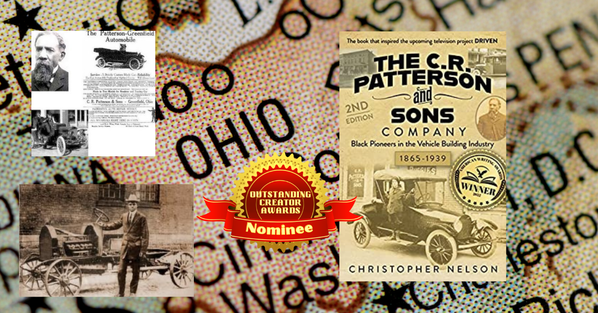




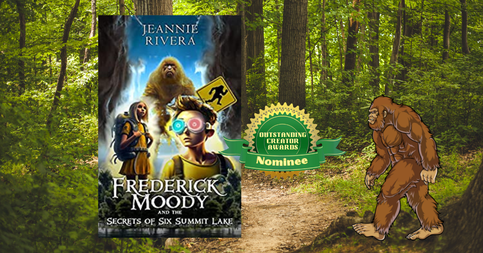

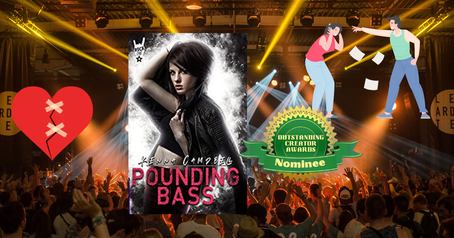
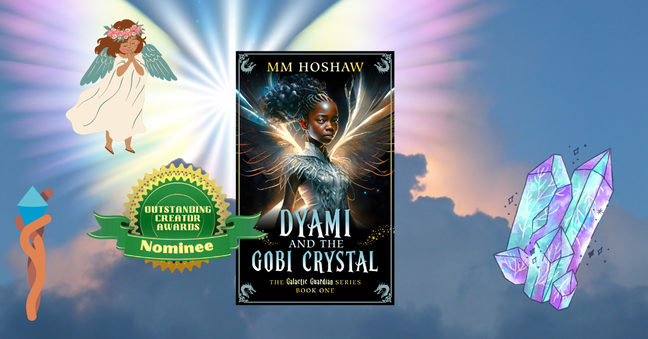
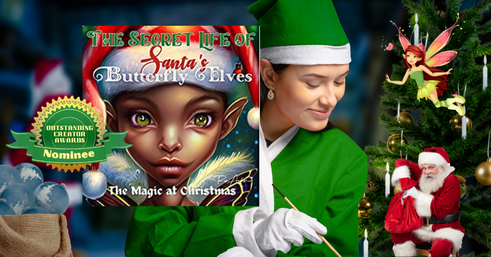
 RSS Feed
RSS Feed